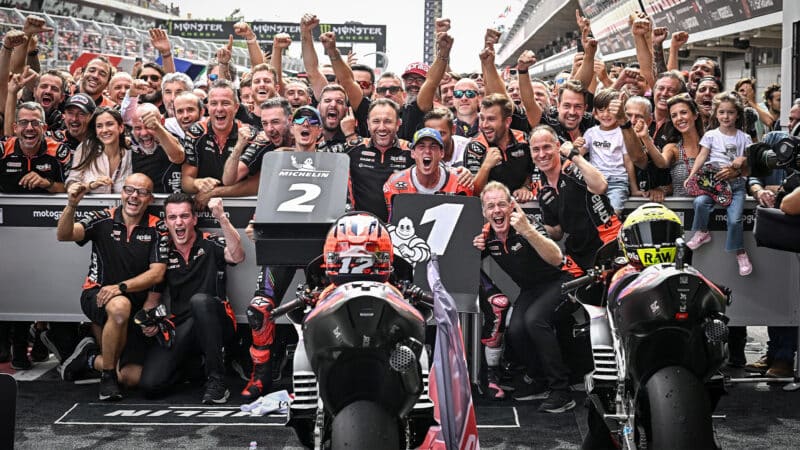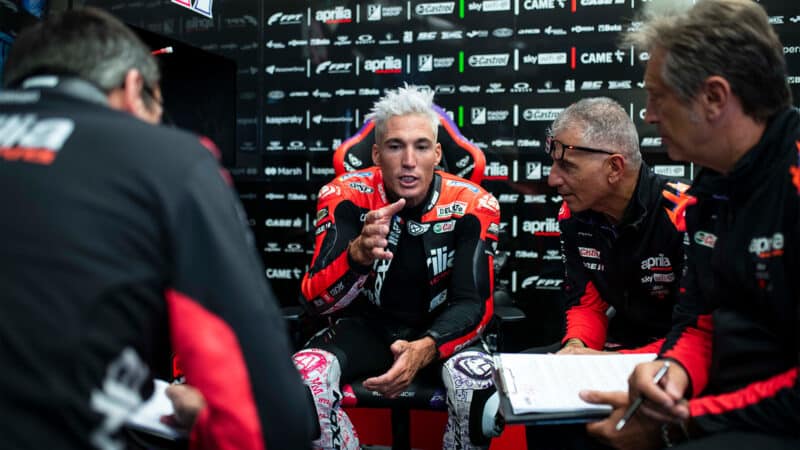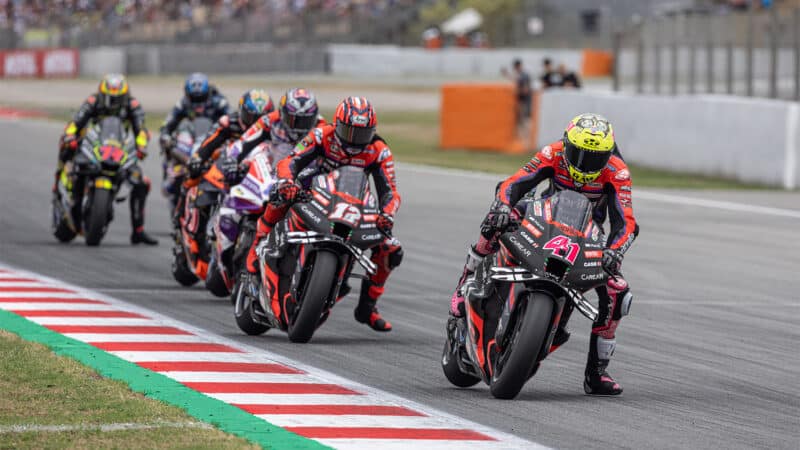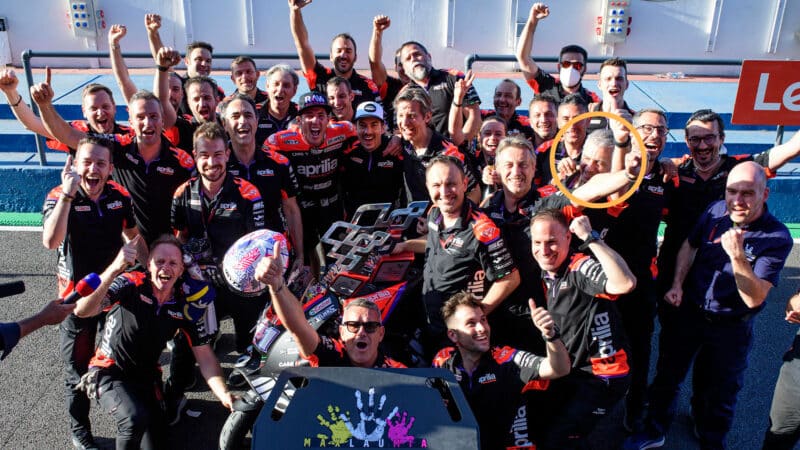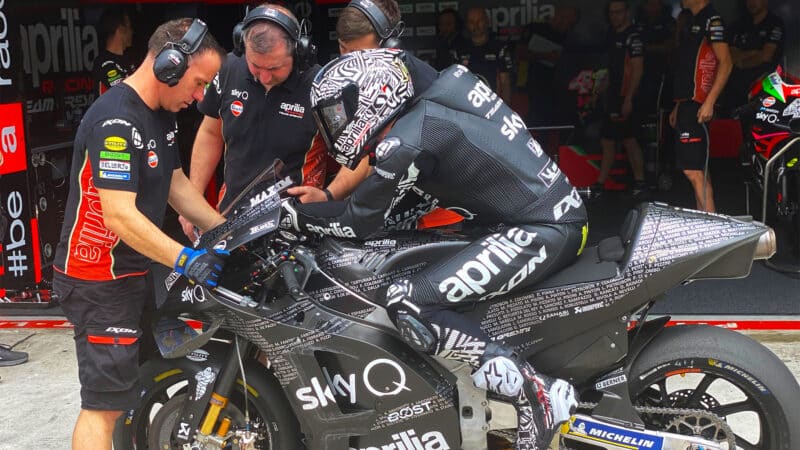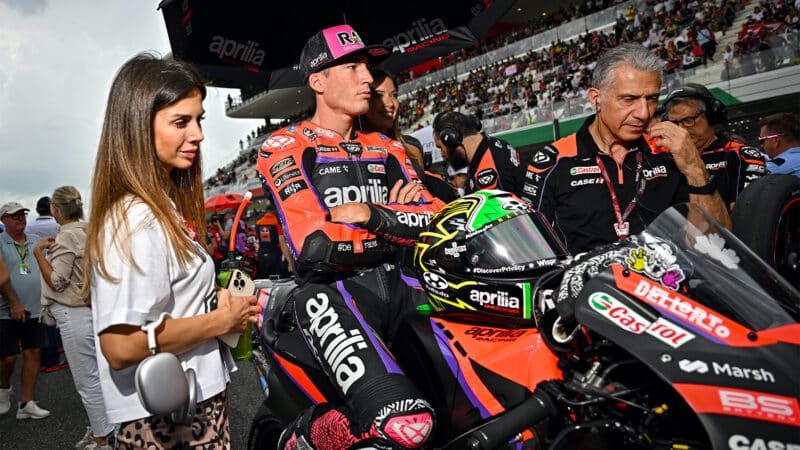“The evolution is too big, so some components on the bikes don’t follow that evolution and for me this is one of the difficulties of MotoGP today. This isn’t a criticism of the tyres, but the tyres are basically the same as three or four years ago, while the bikes have made a big, big evolution.
“Then there is the choice of which tyres we use for the race, which is also a problem now, but the good thing is that it’s the same story for everyone.
“But the evolution of the bikes is so big and I don’t know how they will limit this evolution, because the stress for the riders is so much now. We saw in India [where Jorge Martin collapsed in pit lane after the GP] how much stress they were under.
“Here [we are talking in the Mandalika paddock on the eve of the Indonesian GP] the track is at 60 degrees and we have 300-horsepower engines in the bikes and a lot of electronics components that produce a lot of heat, so it becomes very difficult for the riders, both physically and mentally.
“MotoGP is a very good show but it’s difficult to manage this [end-of-season] calendar: two races in a row, then three races in a row, then another three races in a row. We must really push the riders to the maximum, to really focus and to not make any mistakes. No mistakes.”
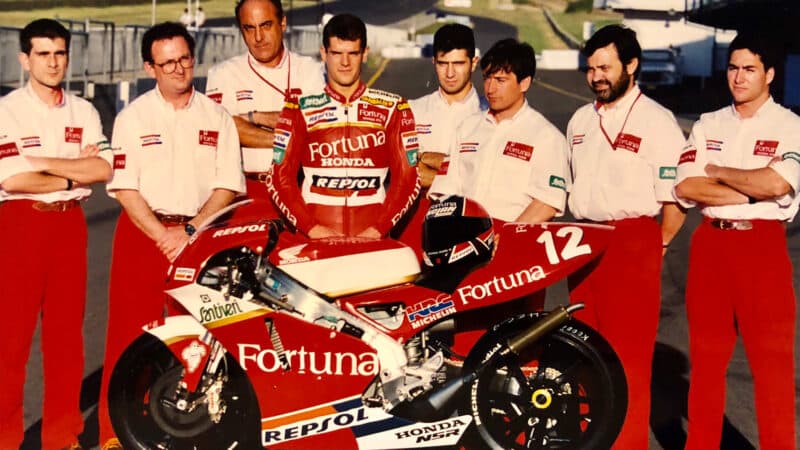
Jiménez (to Checa’s left) in 1995, with legendary engineer Antonio Cobas (second right), team owner Sito Pons (third right) and Romano Forcada (second left), who won three MotoGP titles with Jorge Lorenzo
Team Pons
It’s also very tough for the mechanics…
“Yes, incredibly tough. There are so many different jobs now, plus we also have the limit on engine mileage, so during this stage of the season we have to play with the engines: all the time it’s engine out, engine in, engine out, engine in. We are managing the mileage of all our engines, trying to keep the best engines for the races. Sometimes we change engines just because one engine has done 30 fewer miles.”
What are the biggest things that take up your time during a weekend?
“In the past you started on Friday and you worked on the bike to make it turn better, to make it more stable and so on, mainly with suspension settings. Now you must have the bike almost perfect from FP1, so the base must be 90% fixed and then you work with the electronics and tyres. Years ago, we used to change the geometry a lot, but now we only do this if we are in the shit.”
What about aerodynamics?
“We can only homologate two sets of aero, so we can only use them. So you already know what works and what doesn’t. Sometimes you change from one to the other, but nowadays the main work from day one is tyres: tyre choice, tyre pressure and tyre life.”
And because tyres quantities are limited you’re playing with them like you play with engines?
“Exactly. Sometimes in FP1 you don’t use the good tyres because you need to save them for later, so you must manage all of this. But again, the good point is that the regulations are the same for everybody, so you cannot complain about the tyres.
“For me, the most important thing to do after FP1 is to work on tyre choice, tyre management, tyre temperature and tyre pressure over many laps. These are the most important things.”
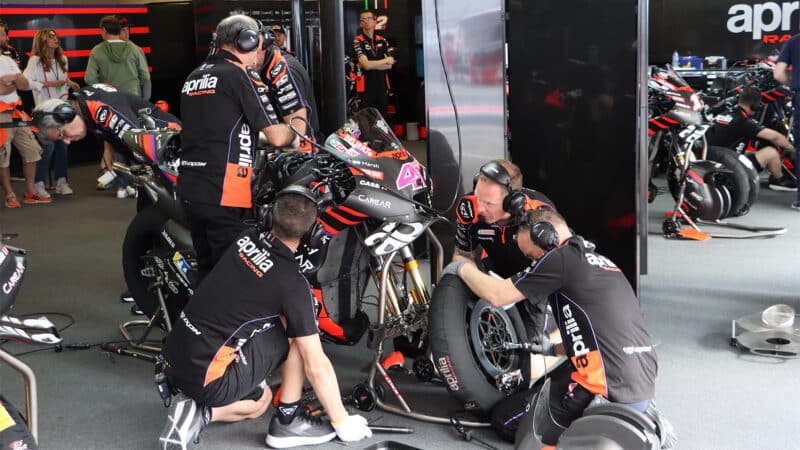
Life has never been tougher for MotoGP mechanics, with twice the workload since the introduction of sprints and an exhausting championship season
Oxley
“But sometimes you must forget this area a bit. For example, at Red Bull Ring, Motegi and Chang [Buriram] you may have brake problems, because at these tracks you are on the limit with the brakes and when you’re on the limit with the brakes then it’s related to the tyres, because you generate so much heat with the big discs. You try to keep the heat from getting to the tyres, but sometimes by cooling one part of the bike you heat up another, so you must find a balance.

